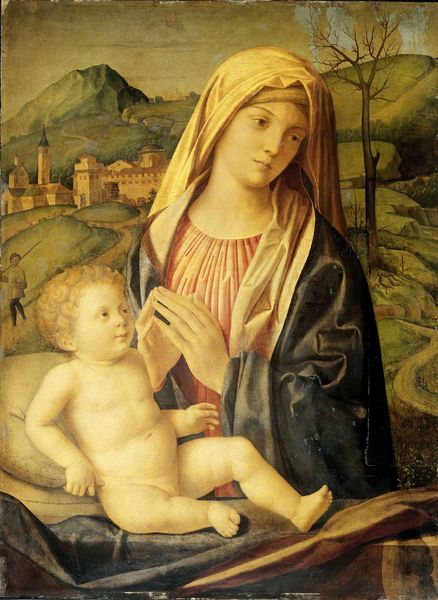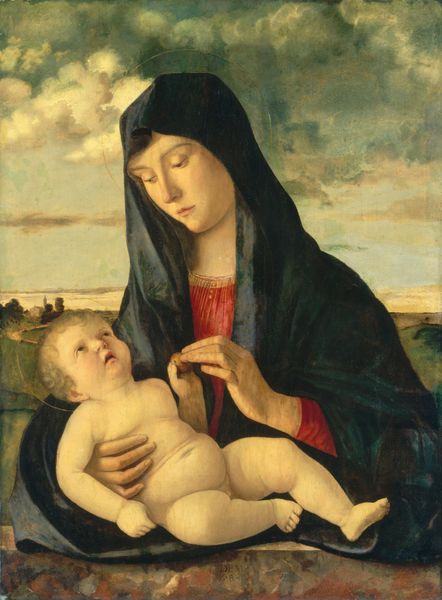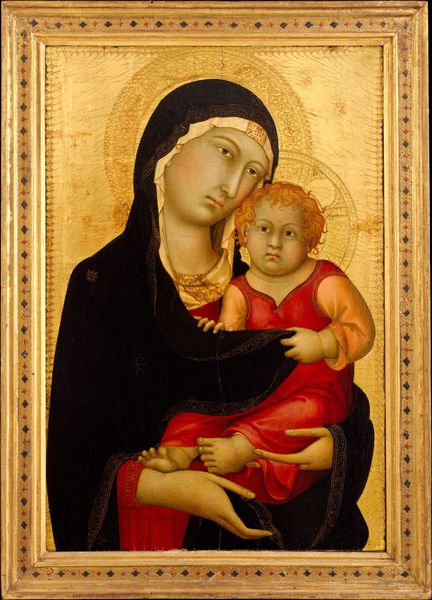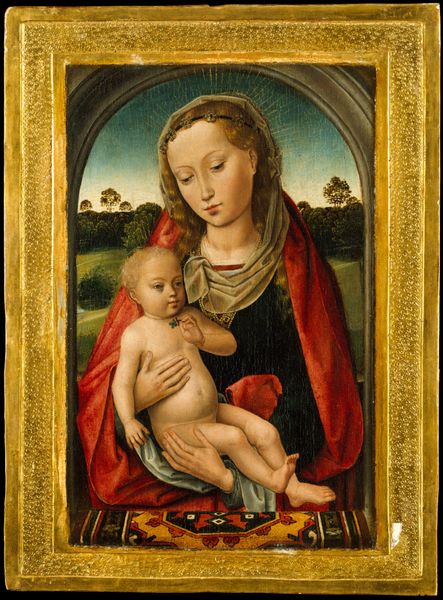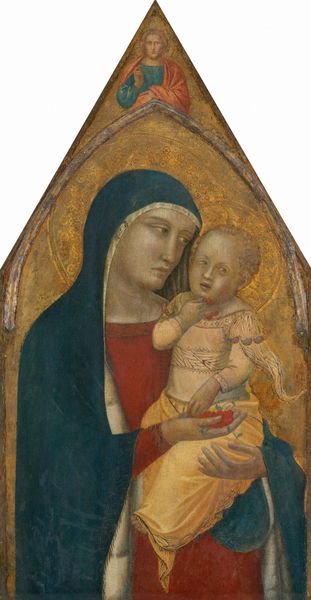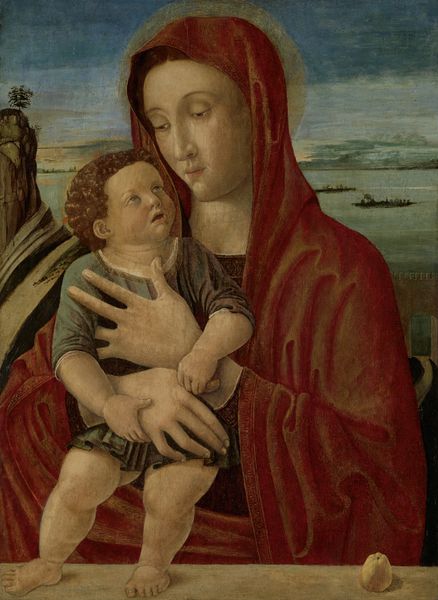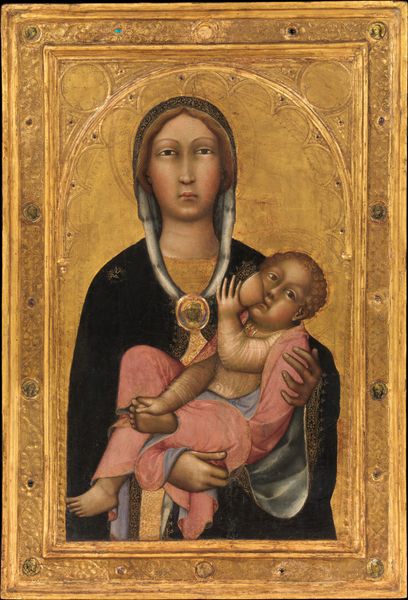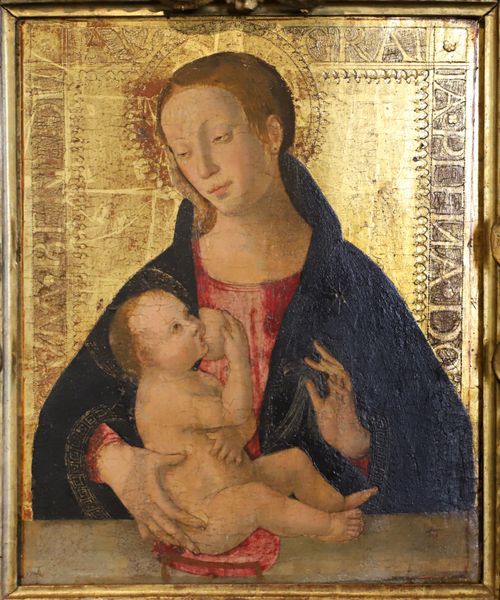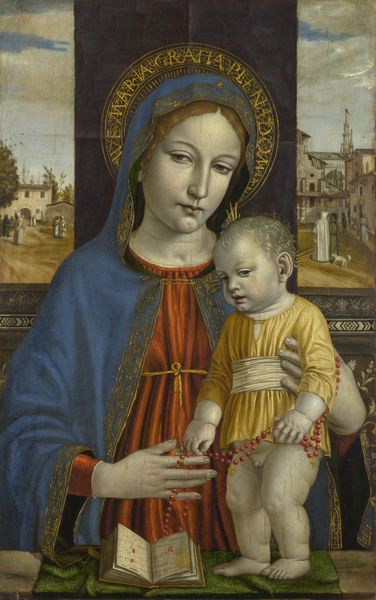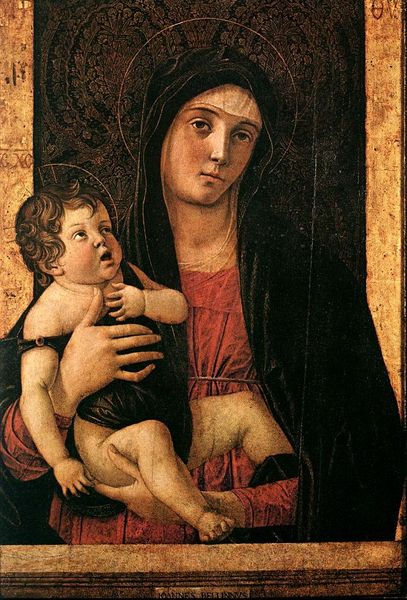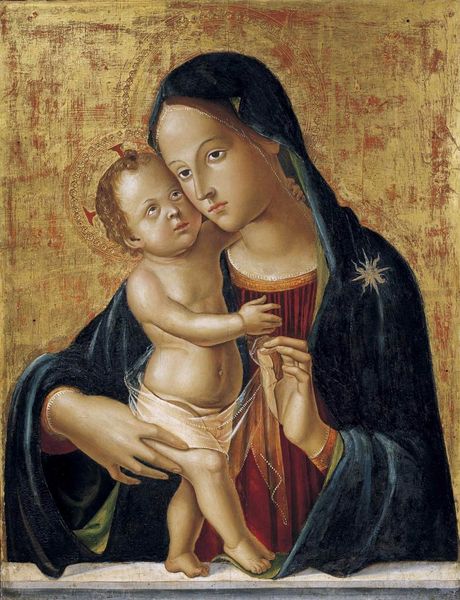
painting, oil-paint
#
portrait
#
painting
#
oil-paint
#
figuration
#
oil painting
#
history-painting
#
italian-renaissance
#
miniature
Dimensions: painted surface: 53 x 41.5 cm (20 7/8 x 16 5/16 in.) overall (area once covered by engaged frame): 54.4 x 42.6 cm (21 7/16 x 16 3/4 in.) framed: 72.39 x 60.01 x 5.08 cm (28 1/2 x 23 5/8 x 2 in.)
Copyright: National Gallery of Art: CC0 1.0
Editor: Here we have Bartolomeo Vivarini's "Madonna and Child," painted around 1475, rendered in oil. The stillness of the subjects, coupled with the soft focus of the background, create a strikingly serene atmosphere. What do you notice, from a formal perspective? Curator: Consider first the pyramidal structure Vivarini employs: the Madonna's head forms the apex, descending through her body to the base formed by the cushion. This compositional choice provides stability and focuses our eye on the faces, especially the delicate interplay of hands. How do you read the colour palette here? Editor: The juxtaposition of the Madonna's deep black robe against her vibrant red dress, and the infant’s luminous skin creates contrast. The use of light seems symbolic, doesn't it? Curator: The carefully modulated light serves not to symbolize, but to sculpt the forms, drawing out the volume of their bodies. This heightens the realism, a hallmark of Renaissance art. What about the framing? Do you perceive a relationship between foreground and background? Editor: I see that they're separated by what appears to be a balcony, but also linked with color: the blue in the sky matching the shade in Mary's garment. How intentional is it to bind an earthly foreground with the infinite? Curator: Here is the crux: The painting presents a closed world, contained within the picture plane. The colours complement each other to harmonise the two figures within it, it provides balance. There is a rhythm that moves around the eye. This is about formalism above any kind of context of theme or person, for instance. Editor: I see what you mean. By focusing on form, color, and composition, you draw attention to the Renaissance’s interest in balance, perspective, and detail without considering a theological agenda or artistic biography. Fascinating. Curator: Precisely. It's through this precise application of colour, shape and line that Vivarini generates interest, nothing else!
Comments
No comments
Be the first to comment and join the conversation on the ultimate creative platform.
